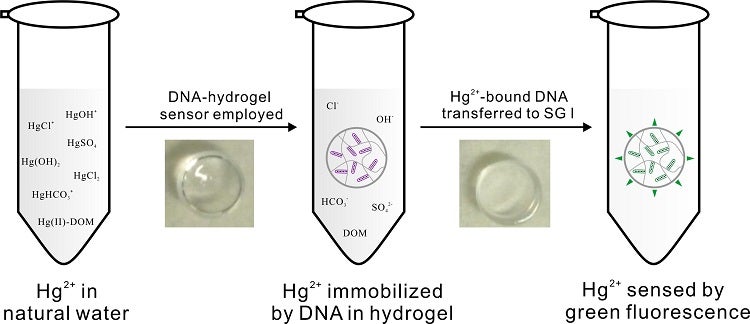A new paper published in the Journal of Hazardous Materials describes a new DNA-based biosensor that selectively measures concentrations of aqueous divalent mercury (Hg2+). The sensing material consist of a small DNA sequence with a high affinity for Hg2+. Early tests under well-controlled lab conditions, however, revealed that the performance of the sensing material is strongly impacted by pH variations and the presence of natural dissolved organic matter (DOM) and common inorganic ligands. However, by incorporating the DNA in a polyacrylamide hydrogel, a new nanomaterial was created that eliminates most of these environmental interferences. The paper is co-authored by Kunfu Pi and Philippe Van Cappellen from the Ecohydrology Research group, and Professor Juewen Liu from the Department of Chemistry and the Waterloo Institute for Nanotechnology. The paper can be accessed here.

Graphical abstract for the DNA-based biosensor for the detection of aqueous divalent mercury.